Justice League finally hits theatres this week, and while its villain, Steppenwolf, is not the big bad many were expecting when the movie was first revealed, he opens up the gateway to a whole new corner of DC Comics canon: Jack Kirby’s legendary Fourth World and its New Gods. Here’s a spoiler-free guide to Steppenwolf and what you need to know about him before you watch Justice League.
Image: DC Comics. Death of the New Gods #1 cover art by Jim Starlin, Matt Banning and Jeromy Cox.
A New Age of Heroes
In the early 1970s, Jack Kirby – who had spent the last decade helping to forge the creation of some of Marvel’s most enduring comics characters alongside Stan Lee – left Marvel Comics, frustrated with the lack of credit he felt he received in comparison to Lee, and negotiated an extensive three-year deal to join its biggest rival, DC. His first project for the company was a bold, epic story – an entire universe, interconnected through three individual comic series, all penned by Kirby. It was called the Fourth World, and it was to be story that mixed science fiction and faith via cosmic battles between light and dark among impossibly powerful, godlike beings – a new generation of Gods that was birthed after the previous mythical lineage ended in Ragnarok (no, not that one, a different one).
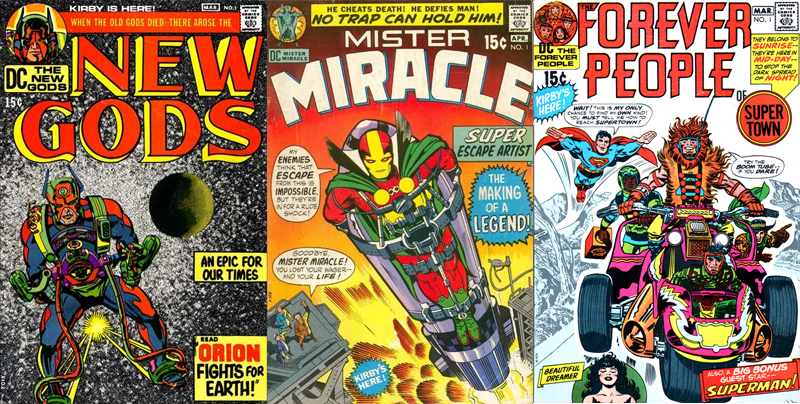
Seen as cosmic beings from a universe beyond DC’s Earth, the movers and shakers of the Fourth World were first teased in stories in Superman’s Pal, Jimmy Olsen, a fourth book Kirby picked up when he joined DC. But the story of the New Gods as we know them nearly 50 years later really kicked off in three 1971 comic book series. There was The New Gods, which featured the almighty Orion as he and his ally Lightray countered the villainous plans of Darkseid on Earth. Then there was Mister Miracle, which featured Scott Free, a New God turned daring escape artist who had fled Darkseid’s horrifying rule to live a new life with his lover and eventual wife, Big Barda. Finally, there was The Forever People, about a superhero team of young New Gods operating on Earth in disguise as incredibly stereotypical ’60s hippies. Although they were originally meant to be largely their own separate thing, many of the New Gods characters would make their way into other DC books.
Alas, Kirby’s grand plan didn’t quite work out. All three of the Fourth World series were cancelled before they were concluded, ostensibly due to poor sales, and then Kirby left DC to once again join Marvel for a brief time before heading into the world of independent comics. Over the next decade, plans to revive the series waxed and waned – collections of Kirby’s work proved popular enough to keep the New Gods characters showing up elsewhere – and by the mid ’80s, Kirby was convinced to come back for one last graphic novel, The Hunger Dogs, to conclude the saga. The book quickly became controversial; Kirby wanted to kill his characters off for their definitive end, but DC wanted them kept alive, leading to a scrapped initial pitch and several reworks. Kirby once again departed DC when Hunger Dogs released with an open-ended fate for most of the New Gods characters, his time with his cosmic characters over once more.
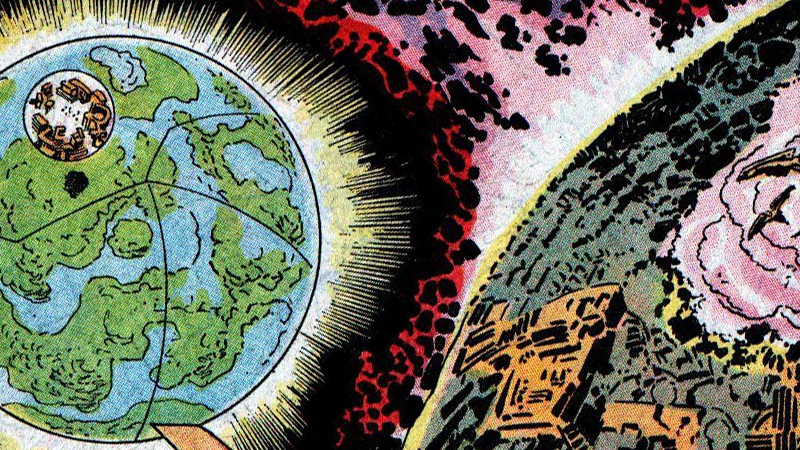
Left to right: New Genesis and Apokolips.
A Tale of Two Worlds
For all the bizarre names and cosmic kookiness, the premise of the Fourth World at large is actually quite simple. Two planets, New Genesis and Apokolips, and their superpowered peoples – quasi-omnipotent and long-living beings who deemed themselves gods due to their vast powers and incredible technology – have been locked in various states of war for aeons, after the end times that brought about the passing of the Old Gods forged their worlds out of the ruins of the ancient planet Urgrund. Apokolips’ ruler, Darkseid, seeks the Anti-Life equation, a formula which allows someone to control the mind of any sentient being; meanwhile, the gods of New Genesis, led by the Highfather, have dedicated their lives to stopping Darkseid. (More on all those guys below.)
New Genesis is a science fiction utopia, an idyllic, heavenly world where its citizens live in relative peace and prosperity, wanting for nothing thanks to the wildly advanced technology they have crafted for themselves. It’s powered by the Source – a cosmic energy believed to be left over from the “godwave” that is responsible for granting the New Gods and other metahumans in the DC multiverse their superpowers. Meanwhile, Apokolips, as the name would imply, is the direct opposite: A hellish city-world covered in vast, imposing superstructures and fiery lava pits. Its people are ruled over in fear by Darkseid, with the “lowlies” and enslaved races from other worlds forced to contribute to the endless war effort, and Darkseid’s winged, monstrous footsoldiers, the Parademons, acting as the enforcers of Apokolips and the bulk of its vast armies.
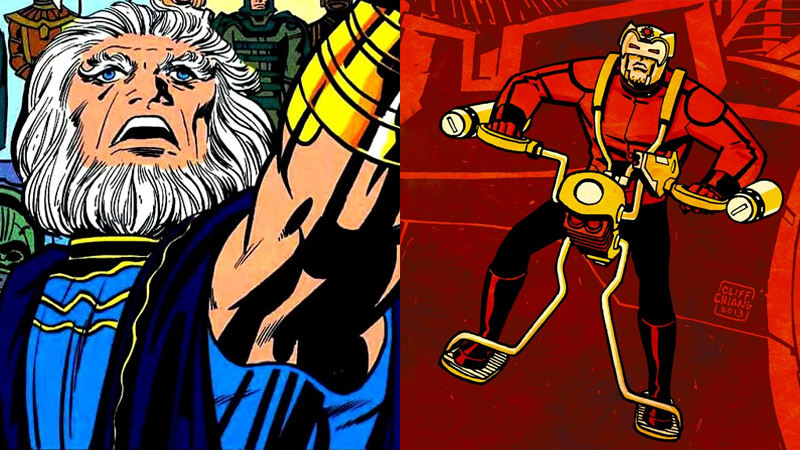
Left to right: Highfather and Orion.
Family Ties
Part of what makes the Fourth World such an intimidatingly complex piece of fiction to dip your toes into is that there’s a veritable swath of characters with odd names to keep up with. There are a few notable recurring ones from each planet in the New Gods pantheon, however, that are much easier to remember and have played long-lasting roles in New Gods stories and other DC tales.
Kicking off on New Genesis, we have the Highfather, the benevolent ruler also known as Izaya, a basically immortal being who is also capable of communing with the Source, which has an implied level of sentience that makes it even more powerful than the New Gods themselves. Also, despite the whole “immortality” thing, he’s actually currently dead, having been murdered in the climax of the first issue of Tom King and Mitch Gerads’ new Mister Miracle series.
Highfather’s right-hand man is Orion, his son and the military leader of New Genesis, often considered to be the most powerful of the New Gods. But he isn’t actually Highfather’s biological child – he’s the son of Darkseid, traded with Highfather’s son as part of a peace treaty as a child, and raised to overcome the hateful qualities of his true father to become one of the most fervent believers in the ideals of New Genesis.
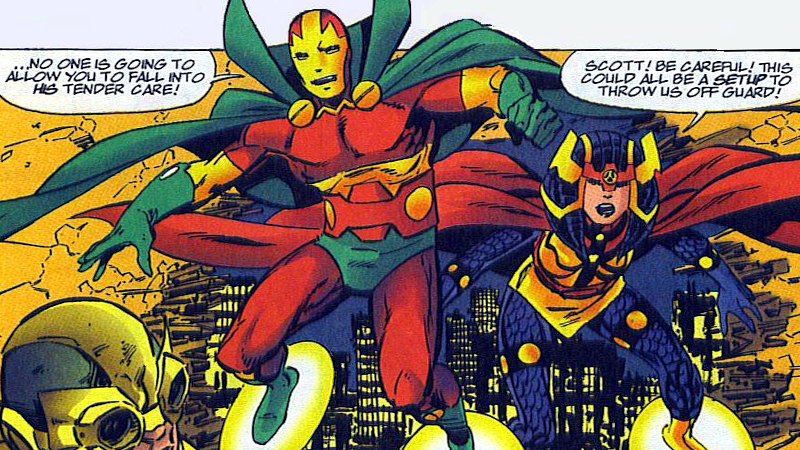
Left to right: Mister Miracle and Big Barda.
On Earth, we have Mister Miracle, AKA Scott Free, and Big Barda. Scott is the biological son of the Highfather, swapped as part of the peace deal that saw Orion sent to New Genesis, and raised in one of Apokolips’ horrifyingly named “Terror Orphanages”. Realising he did not fit in with the nightmarish world, Scott rebelled against his harsh upbringing and eventually fled Apokolips in secret, travelling to Earth – an act that broke the peace treaty between Apokolips and New Genesis and sent the planets to war again. On Earth, Scott took on the mantle of Mister Miracle, acting as an escape artist and superhero using his New God powers and the technologically advanced supersuit he brought with him. Barda, however, was an Apokolips native, raised in one of the Terror Orphanages and handpicked to become a member of the Female Furies, an elite battalion of Darkseid’s best warriors. After falling in love with Scott, she helped him escape the planet, joining him on Earth and eventually marrying him, and swearing herself to defend New Genesis from her former home.
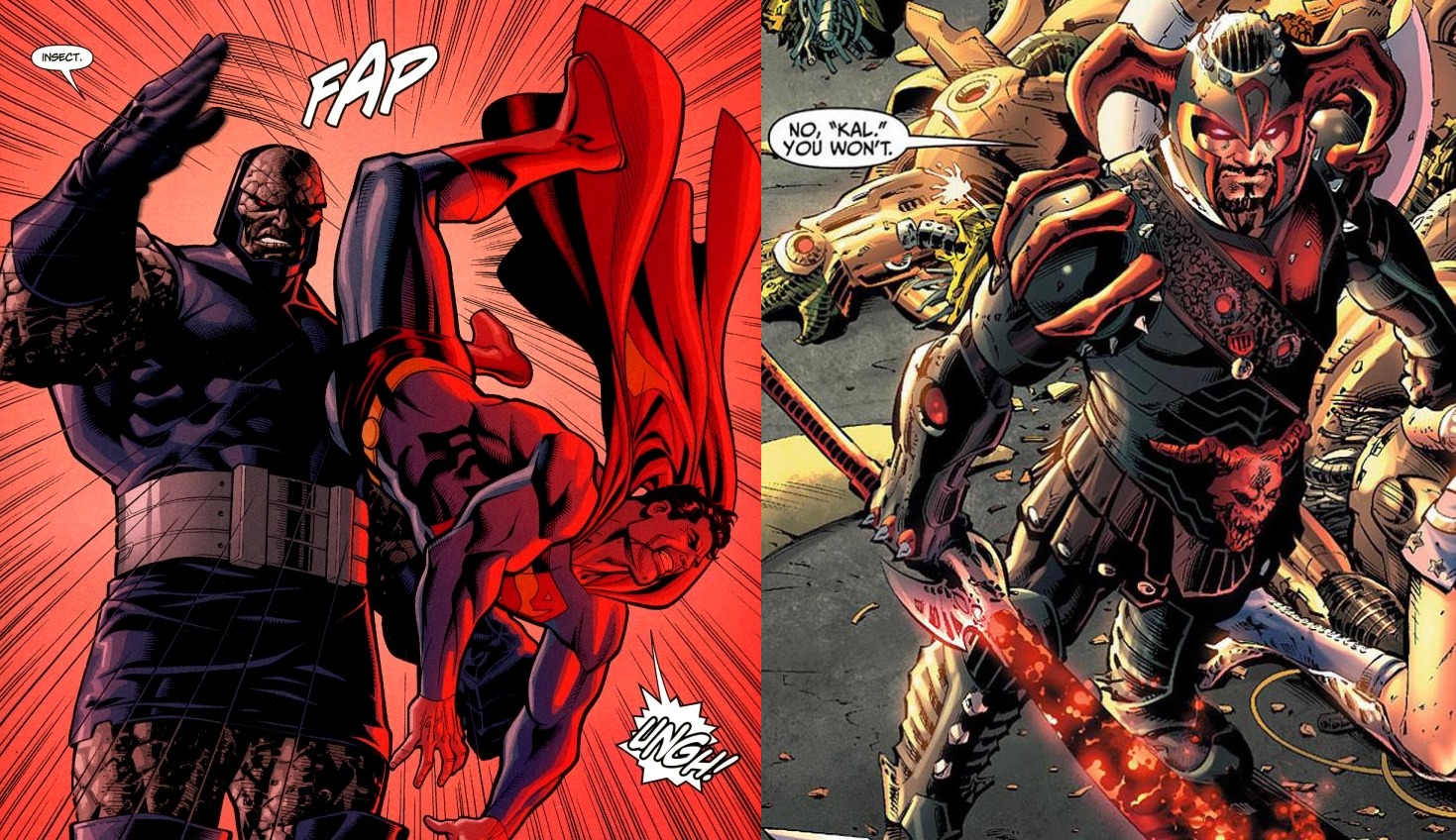
Left to right: Darkseid and Steppenwolf, both seen dunking on Superman.
On Apokolips, of course we have Darkseid, the despotic ruler of the world and longtime foe of not just New Genesis, but the DC universe at large. Aside from Scott’s escape there, Darkseid has a special interest in Earth because he believes part of the Anti-Life equation he covets can be found in the subconsciousness of humankind. Underneath Darkseid are the Darkseid Elite, his most trusted advisers and warriors, although only a handful are really of note, such as Desaad, Darkseid’s top confidant and master torturer, and Granny Goodness, the matron of Apokolips’ Terror Orphanages who raised both Scott and Barda, as well as the founder of the Female Furies. Then, of course, there’s Steppenwolf, the villain of the Justice League movie. In the comics he’s actually Darkseid’s uncle, and a member of the aforementioned Darkseid Elite. He’s also the commander-in-chief of the Parademons and Apokolips’ armed forced at large, which is likely why we’re seeing him first in Justice League instead of Darkseid. He’s presumably leading an attack on behalf of Darkseid in the film.
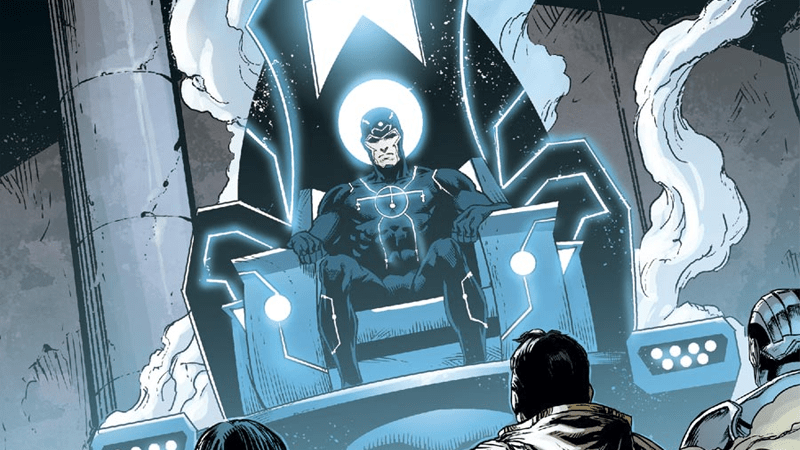
Metron.
In between these two warring factions lies Metron, a passive participant in the struggle between New Genesis and Apokolips who claims to have no stake in either side. Metron floats around in his Mobius chair, a vastly powerful method of transport that can travel through time and space almost instant. But it also serves as a repository of all the knowledge Metron has encountered in his wandering across the cosmos. Metron has an intellect far beyond most people, and claims to have universal knowledge thanks to the chair – a power he believes neither side of the New Gods conflict should be allowed to exploit, hence his neutral stance.
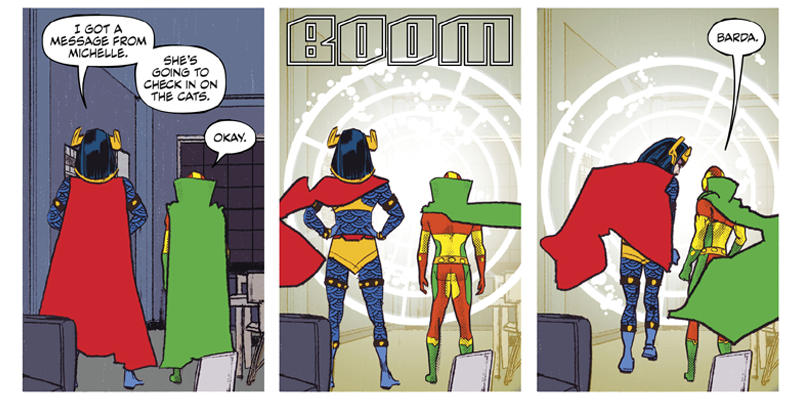
The Technology of the Gods
As well as their godlike superpowers, the New Gods also have highly advanced technology at their beck and call, at least two of which will play a major part in the Justice League movie: Boom Tubes and Mother Boxes.
Boom Tubes serve as the primary travel method of the New Gods, and are the only way someone from the DC Universe can reach the cosmos of the Fourth World, and vice versa. Named for the forceful energy emitted whenever one opens up, Boom Tubes are bright white portals that can transport people across spacetime in an instant. In some versions of DC’s canon, the tubes even shrink or enlarge people if they’re travelling from Earth to the Fourth World, implying that New Gods are actually giant in comparison to normal humans.
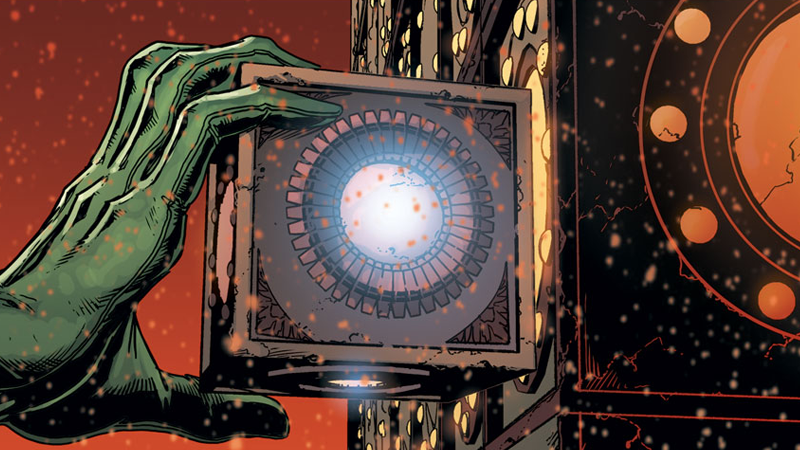
Mother Boxes, meanwhile, are the main piece of New Gods tech you’ll see in Justice League. They’re essentially New God smartphones, supercomputers that act as sources of knowledge, personal assistants, communicators, and even defensive tools, capable of manipulating the environment around them or even healing mortal wounds sustained by the owner – and they’re also used to create Boom Tubes. In Justice League, we know three of them are housed on Earth: One is in Themyscira, one in Atlantis, and the third has been fused onto Cyborg, giving him his mostly robotic body and his powers. Retrieving these boxes looks to be one of Steppenwolf’s reasons for invading Earth. The other? Conquest, on behalf of his master, Darkseid.
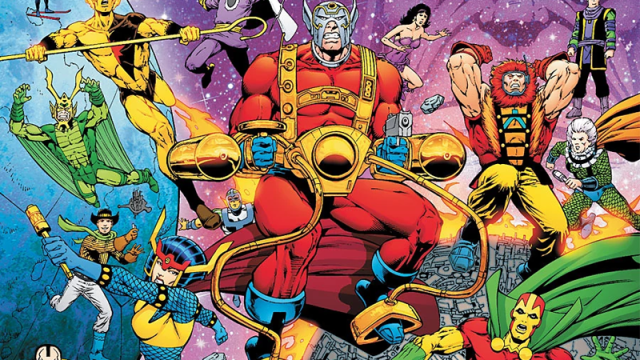
Comments
One response to “Your Guide To Steppenwolf, The Villain Of Justice League, And DC’s Other ‘New Gods’”
All anyone needed to know is that he doesn’t matter, he will never matter and he is just a quick plot device for bringing together the Justice League.